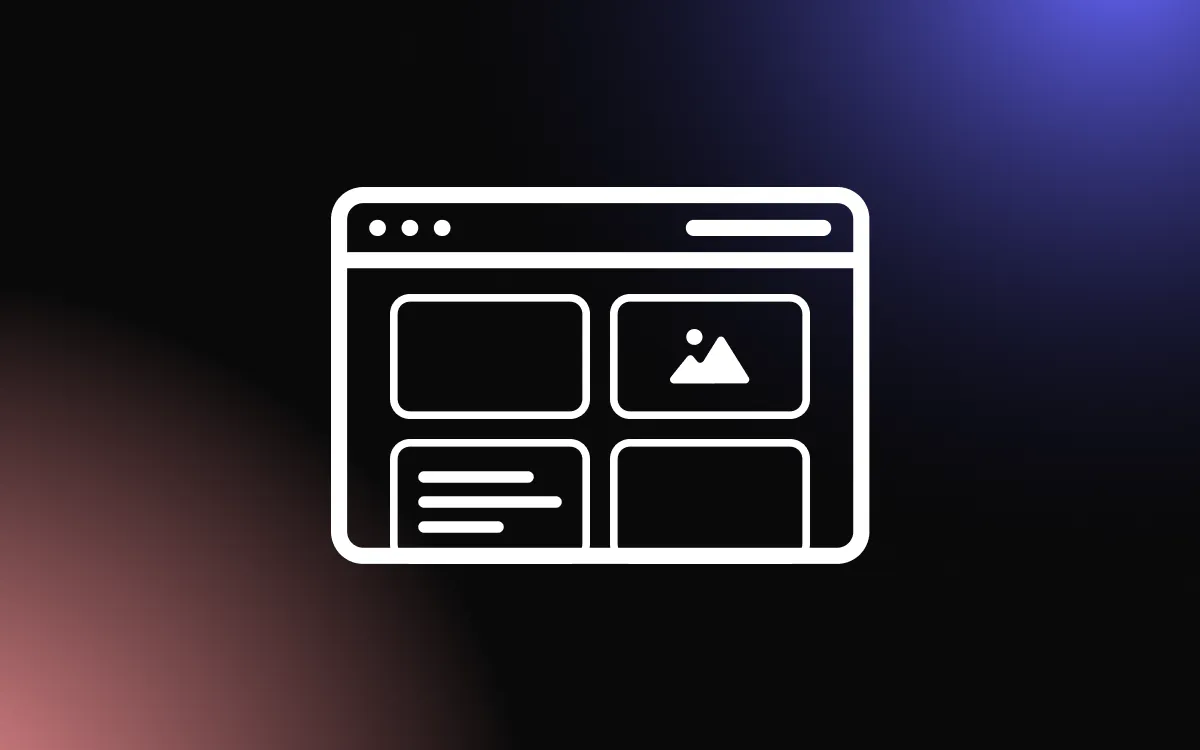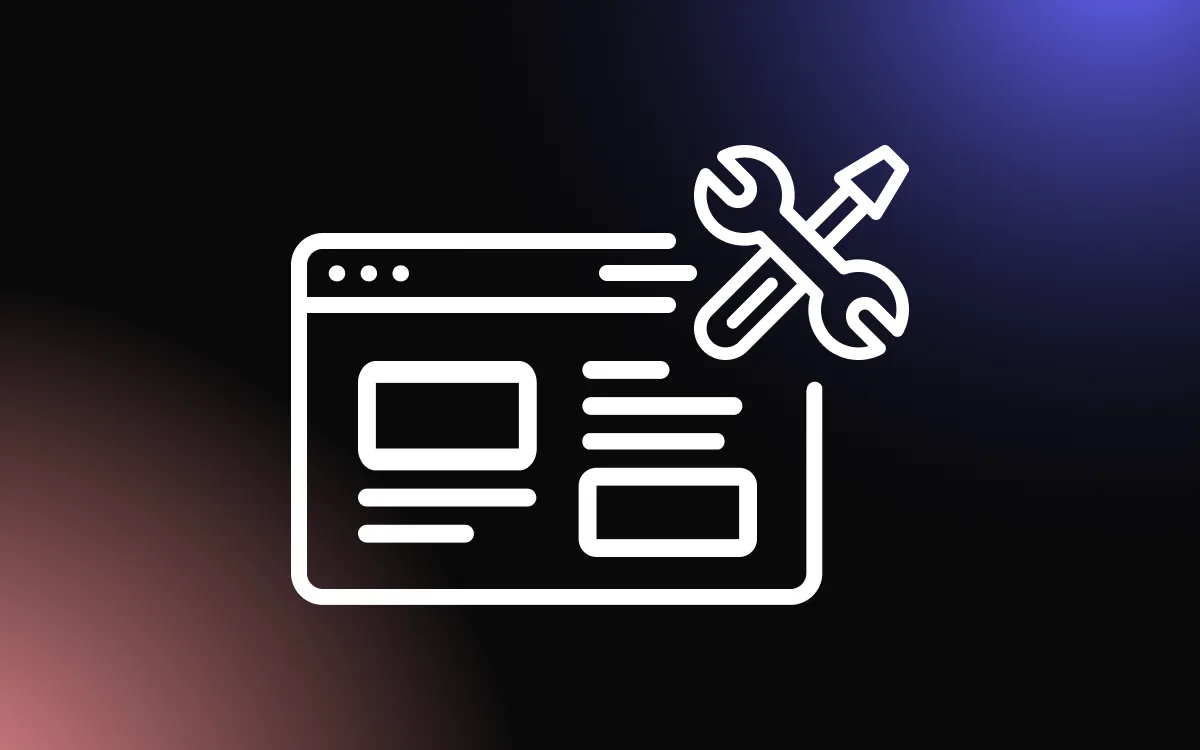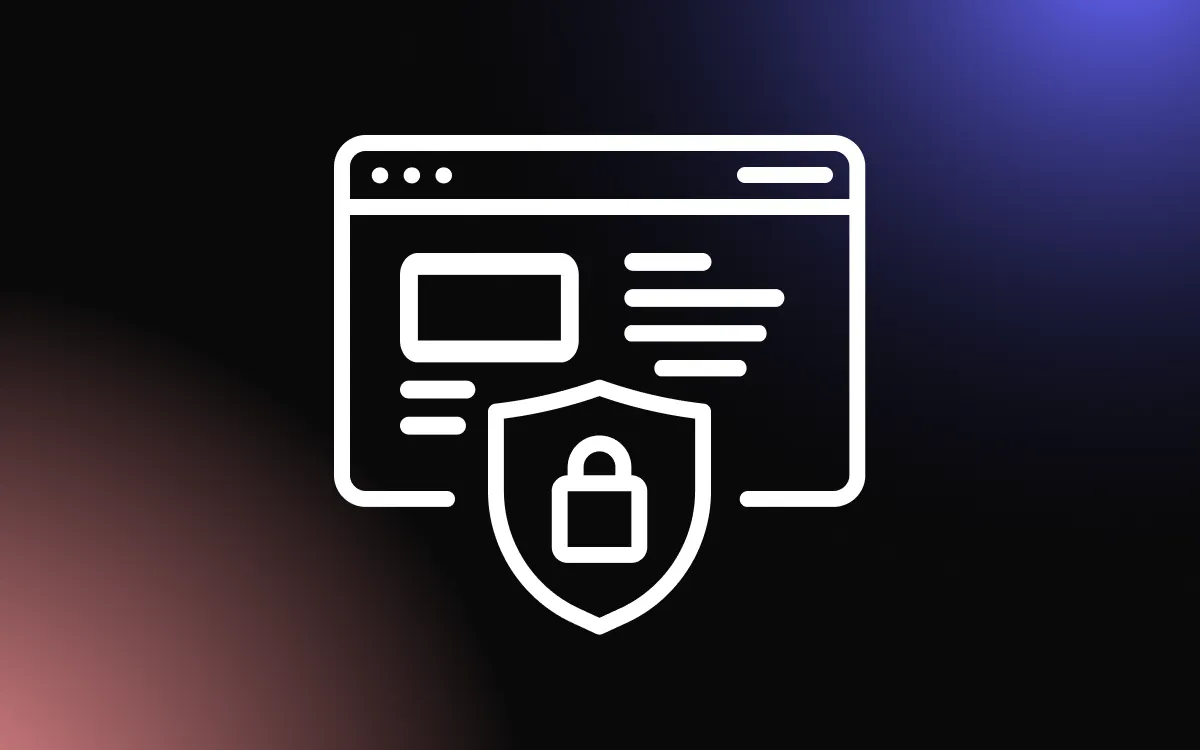
A portfolio website is a digital showcase of your skills, experiences, and achievements. Whether you're a designer, writer, photographer, or any professional looking to display your work, a well-crafted portfolio website can be your ticket to attracting opportunities and making a lasting impression.
To build a website that stands out, this article will serve as your guide to building a portfolio website that not only displays your work but also tells your unique story. We'll walk you through the essential steps, from choosing the right platform and design to curating your content and optimizing for search engines.
What is a Portfolio Website?

A portfolio website is much like a digital showcase of one's talents, skills, and accomplishments. Think of it as a personal museum, open 24/7 on the internet, where professionals, artists, designers, and even hobbyists can display their best works, projects, and achievements. It's not just a collection of images or documents; it's a reflection of one's journey, passion, and expertise.
For many, a portfolio website is the first impression they make on potential employers, clients, or collaborators. It's a space where they can tell their story, share their vision, and stand out in the vast digital crowd. In today's digital age, having a portfolio website is no longer just a 'nice-to-have'—it's an essential tool for personal branding and professional growth.
What Should a Portfolio Website Include?
The Basic

1. A Homepage
The homepage is the main page of a website, and it serves as an entry point to the site’s content. For this reason, it’s one of the most important pages on your website.
Since it’s the first page your visitors will see and as it sets the tone for the rest of your site, it’s prudent to consider its design, your branding, and how it will be represented, including colors, fonts, logos, and taglines.
With a well-designed homepage, you can create a positive first impression and encourage visitors to explore your website further.
A homepage usually contains the following elements:
- A site navigation menu with links to important sections and pages that will allow users to easily navigate your website.
- Call-to-action buttons (CTAs) that will be clearly visible, with a clear call-to-action text that will encourage users to click on it and perform the desired action, like, for example, signing up for a newsletter or making a purchase.
- Many homepages contain a hero section to immediately catch the user’s attention and nudge them towards performing a certain action.
Note: Common Ninja has a wide selection of call-to-action buttons that you can easily add to your website.
2. An About Us Page
Another important page to have on your website is the “About Us” page. This page is crucial to establishing credibility and building trust.
The about us page often contains information about the organization, its mission, its history, and the people behind it, enabling users to establish a connection with the company and learn more about the organization and its values.
Note: Common Ninja has a great selection of widgets that can enhance your “About Us” page.
3. A Contacts Page
A “Contacts” (or a “Contact Us” page) is another, very important page to have on your website. It provides visitors with a way to get in touch with the website's owners or administrators. Typically, it will include contact information about the business (like a contact email address, phone number, and physical address), as well as a contact form that a visitor can fill out and send to contact the website’s owners.
This page helps to further build trust, improve user experience, and enable other businesses to contact the website owners regarding open new business opportunities.
Note: Common Ninja can improve how users contact you via a free and easily customizable Contact form.
4. A Header & Footer
Headers and footers have become an integral part of website design, and anyone building a website should add them to their website.
Having a header and a footer on your website will improve navigation, create a consistent look, support your branding, provide important information, and improve conversion with CTAs.
The header typically includes branding elements (like the colors, logo, company name, etc.), and navigational menus (to other pages, login options, etc.).
The footer will also include branding elements, as well as links to other pages, but its design enables adding more links, CTAs, and other information, in an organized and aesthetically pleasing manner.
The Advanced

While the above elements are true for all websites, a Portfolio website requires a few more elements.
Portfolio/Work Showcase
A gallery or collection of your best works. This could be divided into categories or industries, with each project having its own description, challenges faced, solutions provided, and results.
Services
If you offer specific services, list them here. This could include design, consulting, writing, etc.
Testimonials
Feedback from clients or colleagues that vouch for your skills and professionalism.
Resume/CV
A downloadable or viewable version of your professional resume or CV.
Blog
If you regularly write articles or share updates, a blog section can showcase your expertise and keep your site updated.
Social Media Icons
Links to your professional social media profiles, like LinkedIn, Behance, Dribbble, or even Twitter.
How To Create a Portfolio Website?
Step 1: Choose Your Website Builder
There are lots of available website-building platforms today. How many you ask? Well, there are well over 200 website and e-commerce builders.
Clearly, not all are on the same level or for the same purpose, but the sheer amount is both fascinating and scary. Fascinating because it means that there’s a lot to choose from, and scary because there’s too much to choose from.
Luckily, there are around 20 that truly stand out in terms of the features they offer, how easy it is to use them, and their prices. We have a great article about the best website builders out there that you should definitely take a look at.
Great Website Builders for a Portfolio Website
While the above gives you a broad overview of website building, here are some website builders that could be great for building a Portfolio website:
Wix

Wix offers a drag-and-drop interface that's perfect for creatives who want a customized look without diving into code. With a vast array of templates specifically designed for portfolios, it's a favorite among photographers, designers, and artists.
Squarespace

Known for its sleek and modern templates, Squarespace is ideal for those wanting a polished and professional-looking portfolio. Its responsive designs ensure portfolios look great on any device, and with our Squarespace plugins, you can further customize and enhance your site’s functionality.
Behance

A platform by Adobe, Behance is not just a website builder but also a community for creatives. It's perfect for designers, illustrators, and photographers to showcase their work and connect with potential clients.
Cargo

Cargo stands out with its avant-garde templates and an emphasis on creative freedom. It's a go-to for artists and designers who want their portfolio to be as unique as their work.
Weebly

Weebly offers an intuitive drag-and-drop builder, making it easy for anyone to create a portfolio site. With a range of stylish templates and e-commerce integration, it's great for freelancers looking to sell their work or services.
Choose a Hosting Plan (Optional)
Depending on what website builder you chose, you may have to get a hosting plan separately. We have a great guide on the top 10 hosting providers available on the market. Mind you that many of these offer the option to get a domain name, too.
Choose a Domain Name (Optional)
Depending on what website builder you choose, and on what hosting plan you choose, you may have to get a domain name separately.
Step 2: Start Designing Your Website
Choose a Template (Optional)
Some website builders offer pre-made templates that you can choose from for specific website types. This is a great way to save time on design.
Choose Color Schemes
Color schemes are super important in website design and branding. They're not just for show—colors can really affect how we feel and react. If a brand chooses the right colors, it can guide our eyes where they want, make us feel a certain way, and even get us to take action.
This is where color theory comes in. It's basically the science of how colors work together and how they make us feel. For instance, blue usually makes us feel calm and trustful, red stirs up energy and passion, and green symbolizes growth. So, when a brand chooses colors that match its vibe and the feelings it wants to evoke, it can really boost its recognition and trust with customers. Super cool, right?
Choose Fonts
Font pairing is like the secret sauce in website design and branding. Just like colors, the fonts you choose can really set the mood and deliver your brand message. You've got to think about the vibes different fonts give off. A fancy script might feel elegant, while a bold, all-caps font can scream confidence and power.
The trick is in finding fonts that complement each other without clashing or looking too similar. That's why we do font pairing. You want your headline font to grab attention, but it needs to work well with your body text font, which should be easy to read. So, for instance, you might pair a decorative font for your headers with a simple, clean one for the body text. Get it right, and you're on your way to a website that looks super professional and keeps your visitors reading. It's a bit like a good music duo—each part's got to be good on its own, but together they create a whole new level of awesome!
Add a Hero Image
The hero section of a website is like the opening scene of a movie—it sets the stage and grabs your attention. It's that first big chunk you see when you land on a website, often with a big image, a catchy headline, and a call to action. It's there to quickly show you what the site or the brand is all about and, hopefully, make you want to stick around.
Choosing the right elements for your hero section is key. A stunning image or background can draw people in, while a powerful headline can spark interest. Then there's the call to action, which could be a button or a link, nudging you to do something—like shop now, sign up, or learn more. So, think of the hero section like your website's elevator pitch. It's got to be punchy, engaging, and super clear about what's on offer. If it's done right, it's like a friendly welcome mat that invites visitors to come in and explore more.
Add CTAs
Calls to Action (CTAs) on a website are like your friendly tour guides. They tell you where to go next and what to do. You'll often find them as buttons or links with words like "Buy Now", "Sign Up", "Learn More"—you get the idea. They're super important because they help guide your visitors and encourage them to take the actions you want them to.
But here's the thing: all CTAs are not created equal. A good CTA is clear, concise, and compelling—it tells you exactly what you'll get and why you should click on it. And where you place them can make a big difference, too. You want to position your CTAs where they'll be noticed, like in your hero section, at the end of a blog post, or even in a pop-up. So, think of CTAs as your website's friendly nudges, steering your visitors in the right direction and getting them to engage, interact, and hopefully, become customers. It's like having a good salesperson right there on the page.
Step 3: Publish The Website
When you are done setting up and designing your website, publish it. And that’s it.
How To Enhance Your Portfolio Website?
Enhance Your Website With Powerful Widgets

While many of the website builders we recommended are great for building your Portfolio website, they are somewhat limited in the features and tools they offer, and, in a competitive world, every additional feature that you can add to your website can be a game changer.
That’s where Common Ninja comes in to save the day.
Common Ninja offers an extensive, ever-growing collection of professional and reliable widgets that will help you save time and money and improve your website beyond what your current website-building platform offers.
Common Ninja’s widgets are free, fully customizable, perfectly responsive, and easy to use (just check our YouTube guides), so be sure to check them out, and greatly improve your website.
Common Ninja — The Only Collection of Widgets You’ll Ever Need
Content
Content is an important part of any website, no matter what niche it’s in. Content can include anything from text, images, videos, and other media that informs, educates, or entertains the audience, and we highly recommend that you add good content to your website.
It is crucial for several reasons:
- It provides value to visitors — good content, can provide value to users, whether these are guides, service or product comparisons, tips, tricks, or other equally helpful content.
- It builds trust and credibility — by creating good, well-written, and well-researched content, you can increase trust in your brand and improve its credibility.
- It improves SEO: Search engines like Google prioritize websites with high-quality, relevant content, so by creating content that includes relevant keywords and provides value to your audience, you can improve your website’s search engine rankings and drive more traffic to your website.
- It drives conversions — well-written content that addresses pain points, with strategically placed CTAs can drive conversions, such as sign-ups, purchases, or inquiries, up.
- It establishes your brand’s voice and identity — the content on your website is an opportunity to establish your brand’s voice and identity. Consistent and high-quality content can help your brand stand out and create a memorable impression on your audience.
Optimization
Optimizing a website is essential for improving its visibility on search engines, increasing traffic, and improving the user experience. Here are some effective ways to optimize your website:
- Remove unnecessary distractions
- Improve page speed
- Optimize for mobile
- Optimize forms
- Write good copy
- Write good CTAs
- Define and communicate your value proposition
- Localize content
Promotion
Promoting a website is essential for increasing its visibility and driving traffic to it.
It requires time & effort, and here are some ways that can help you promote your website:
- Social Media: Social media platforms like Facebook, Twitter, LinkedIn, and Instagram are great for promoting your website, building a following, and driving traffic to it.
- Email marketing: Building an email list is an effective way to promote your website, reach your audience directly, and keep them updated on your latest content or products.
- Paid advertising: Paid advertising through platforms like Google Ads or social media ads can help you reach a larger audience and drive targeted traffic to your website.
- Collaboration: Collaborating with other websites in your niche can help you gain exposure, drive traffic to your site and improve your SEO via backlinking.
- Incentives: Offering incentives like discounts, free trials, or giveaways can attract new users to your website and encourage them to share it with others.
Conclusion
In conclusion, building a portfolio website is a crucial step in showcasing your expertise, skills, and unique perspective to potential clients, employers, or collaborators. It's about creating a digital space that reflects your professional journey, your style, and your passion.
Remember, a portfolio website is more than just a collection of work; it's a reflection of who you are as a professional. With the insights and steps shared in this article, you're now well-equipped to create a portfolio website that resonates with your audience and amplifies your professional presence. So, let's embark on this creative journey and craft a digital portfolio that captures your essence and showcases your best work.


